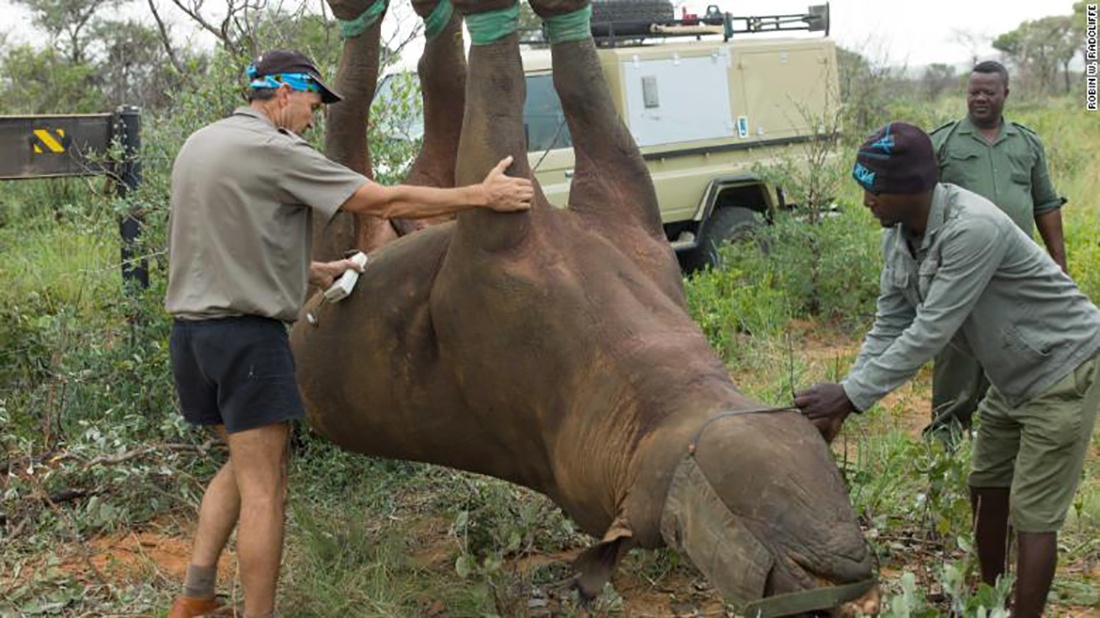Why Do Rhinos Hang Upside Down When They are Moved from One Place to Another?
Why do rhinos hang upside down when they are moved from one place to another?
The sight of a rhinoceros being hung upside down in the sky of an African assembly and taken to a helicopter may seem awkward. But the importance of transporting rhinos for conservation has been found to be really different.
Rhinos are often transported by truck, but the process can be complicated in remote areas where some roads are inaccessible. That's why conservationists have started using helicopters in it since ten years ago. The rhino is either placed on a stretcher or tied upside down.
Conservatives prefer to hang it upside down because they believe it will be faster, easier and cheaper. However, it was not clear how this affected the rhinos. The Namibian government has sent an investigation team to find out. And the results, published in January, have now taken everyone by surprise. "We thought hanging upside down would be the worst thing for rhinos," said Robin Radcliffe, a senior lecturer in wildlife medicine.
On the contrary, his team found that this uncomfortable experience was actually the best option for rhino health. The study concludes that this method is most suitable for transportation, even if it looks awkward. Namibia is home to more than a third of the world's black rhinos. And in 2015, Cornell's team carried out a comparative study of about 12 black rhinos, weighing between 1,700 and 2,700, by hanging them upside down on a crane. In it, they measured the rhino's breathing, ventilation and other physical conditions. When he was reversed, his blood oxygen level was found to be high.
According to Radcliffe, inversion stretches its spine and helps to open the airway. In addition, they found that when the rhino was taken to sleep without hanging, there was a lot of breath or air that does not give oxygen to the body, which is also called 'dead space'.
There is not much difference between lying on a stretcher and hanging upside down, but the anesthetics used in rhinos in these procedures are very powerful, which can reduce the amount of oxygen in their blood and cause hypoxemia. So even a small improvement in the condition will be very good for the health of the rhino. Two helicopters are needed to transport the rhinos that way. It takes a team of six people up to thirty minutes to get the rhino's body together and to ensure all safety. It only takes a few minutes to attach the ropes to the animal's legs. Therefore, its cost is relatively low.
Both helicopters cost $ 4,000 per hour and have no adverse effects on animal health. Because in this process, the rhinoceros does not have to be anesthetized for a long time as it can be taken to the designated place faster than in the vehicle. To anesthetize rhinos, they use opioid tranquilizers, which are a thousand times more powerful than morphine. This is the most dangerous aspect of moving animals.
Why are rhinos transferred? Black rhinos live in the desert and have large populations throughout Africa. In the 1960's, more than 100,000 black rhinos lived in the wild in Africa. But illegal poaching and smuggling, which continued aggressively for 30 years, destroyed 98 percent of the animals. Then, in the mid-1990's, the number of black rhinos dropped to 2,354. That's why conservationists have begun to adopt a cautious policy to keep him safe. In the next few years, the rhino population doubled to 5,600.
But even if the numbers increase, they will not come out of the forest, so they are still at risk of extinction. When a large number of rhinos are in one place, their numbers are more likely to decrease. That is why they are moved from time to time to ensure diversity. "We don't want a black rhino to have to breed with its own mother or daughter," says Radcliffe. In some cases, it is necessary to relocate in order to protect it from predators. In 2020 alone, rhino poaching in Namibia is down 40 percent from 2019.






